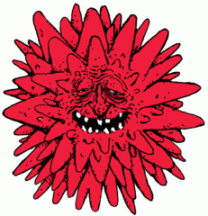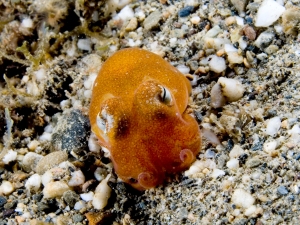You are currently browsing the monthly archive for May 2013.
Want to get involved in the wider microbiology community? Want to discuss the latest microbiology research in a friendly, welcoming environment?
Come and join us at the Microbiology Twitter journal club, #microtwjc .
The journal club runs every other Tuesday evening at 8pm UK time and each session we discuss a different paper. Have a look through earlier posts to get an idea of the types of papers we have covered so far and check out this page for transcripts of many of the sessions.
We are currently on the lookout for people to help us pick papers and steer sessions: no previous experience required at all. Anyone from undergrads to professors is more than welcome to get involved.
We can give you hints and tips about Twitter if you are a Twitter newbie and if you’re new to journal clubs we will make sure there is someone more experienced on hand to help out if you need it.
The club is great fun and it’s a great way to network with both the UK and worldwide microbiology community.
If you do want to find out more please get in touch via email (zoonotica@hotmail.co.uk), twitter (contact @_zoonotica_) or simply by commenting below.
If you know anyone else who might be interested please point them in the direction of this page 🙂
 Virus by Drouet
Virus by Drouet
#microtwjc Week 27
This time it will a bit of an excursion into the world of ecology…I had a few paper that seemed interesting, but in the end I thougt, why not this one, I think it is something we have not covered so far and should definitely be of general interest…It is on nitrogen pollution and its impact on the microbial community in vernal pools.
We meet as usual 8 pm BST on the 28th of May! Hope to see many of you there!
Here is the abstract of the paper and the link to the full paper: http://www.biomedcentral.com/1471-2180/13/78
Shotgun metagenomic analysis of metabolic diversity and microbial community structure in experimental vernal pools subjected to nitrate pulse
By Sarah R Carrino-Kyker, Kurt A Smemo and David J Burke
Background
Human activities have greatly increased nitrogen (N) levels in natural habitats through atmospheric N deposition and nutrient leaching, which can have large effects on N cycling and other ecosystem processes. Because of the significant role microorganisms play in N cycling, high inputs of nitrogenous compounds, such as nitrate (NO3-), into natural ecosystems could have cascading effects on microbial community structure and the metabolic processes that microbes perform. To investigate the multiple effects of NO3– pollution on microbial communities, we created two shotgun metagenomes from vernal pool microcosms that were either enriched with a solution of 10 mg NO3–N (+NO3-) or received distilled water as a control (−N).
Results
After only 20 hours of exposure to NO3-, the initial microbial community had shifted toward one containing a higher proportional abundance of stress tolerance and fermentation environmental gene tags (EGTs). Surprisingly, we found no changes to N metabolism EGTs, even though large shifts in denitrification rates were seen between the +NO3– and –N microcosms. Thus, in the absence of NO3– addition, it is plausible that the microbes used other respiratory pathways for energy. Respiratory pathways involving iron may have been particularly important in our –N microcosms, since iron acquisition EGTs were proportionally higher in the –N metagenome. Additionally, we noted a proportional increase in Acidobacteria and Alphaproteobacteria EGTs in response to NO3– addition. These community shifts in were not evident with TRFLP, suggesting that metagenomic analyses may detect fine-scale changes not possible with community profiling techniques.
Conclusions
Our results suggest that the vernal pool microbial communities profiled here may rely on their metabolic plasticity for growth and survival when certain resources are limiting. The creation of these metagenomes also highlights how little is known about the effects of NO3– pollution on microbial communities, and the relationship between community stability and function in response to disturbance.
A few questions which could be discussed:
- How was it written? Easy to understand?
- What do you think of the experimental setup and the methodology?
- Are you missing any further experiments/controls?
- Do you think this approach is useful for analysing environmental pollution?
Next Tuesday marks the 1 year anniversary of #microtwjc – I can’t believe it’s come around so quickly! Thank you to everyone who has been involved running the sessions, taking part in them and advertising them to colleagues. Please continue! It wouldn’t be half as much fun without you all 🙂
On to this week’s paper
This week I’ve chosen this paper in mBio by Heath-Heckman et al, because I am constantly amazed at the number of different ways the microbes that live in or on us affect us, our bodies and our behaviours (although I will admit to also being drawn to cute animals like the one above!)
Bacterial Bioluminescence Regulates Expression of a Host Cryptochrome Gene in the Squid-Vibrio Symbiosis
Elizabeth A. C. Heath-Heckman, Suzanne M. Peyer, Cheryl A. Whistler,Michael A. Apicella, William E. Goldman, Margaret J. McFall-Ngai
Importance
In mammals, biological rhythms of the intestinal epithelium and the associated mucosal immune system regulate such diverse processes as lipid trafficking and the immune response to pathogens. While these same processes are affected by the diverse resident microbiota, the extent to which these microbial communities control or are controlled by these rhythms has not been addressed. This study provides evidence that the presentation of three bacterial products (lipid A, peptidoglycan monomer, and blue light) is required for cyclic expression of a cryptochrome gene in the symbiotic organ. The finding that bacteria can directly influence the transcription of a gene encoding a protein implicated in the entrainment of circadian rhythms provides the first evidence for the role of bacterial symbionts in influencing, and perhaps driving, peripheral circadian oscillators in the host.
Abstract
The symbiosis between the squid Euprymna scolopes and its luminous symbiont, Vibrio fischeri, is characterized by daily transcriptional rhythms in both partners and daily fluctuations in symbiont luminescence. In this study, we sought to determine whether symbionts affect host transcriptional rhythms. We identified two transcripts in host tissues (E. scolopes cry1 [escry1] and escry2) that encode cryptochromes, proteins that influence circadian rhythms in other systems. Both genes cycled daily in the head of the squid, with a pattern similar to that of other animals, in which expression of certain cry genes is entrained by environmental light. In contrast, escry1 expression cycled in the symbiont-colonized light organ with 8-fold upregulation coincident with the rhythms of bacterial luminescence, which are offset from the day/night light regime. Colonization of the juvenile light organ by symbionts was required for induction of escry1 cycling. Further, analysis with a mutant strain defective in light production showed that symbiont luminescence is essential for cycling of escry1; this defect could be complemented by presentation of exogenous blue light. However, blue-light exposure alone did not induce cycling in nonsymbiotic animals, but addition of molecules of the symbiont cell envelope to light-exposed animals did recover significant cycling activity, showing that light acts in synergy with other symbiont features to induce cycling. While symbiont luminescence may be a character specific to rhythms of the squid-vibrio association, resident microbial partners could similarly influence well-documented daily rhythms in other systems, such as the mammalian gut.
There is a blogpost on this article available at mBiosphere. If anyone else writes/has written a post on the article please don’t be shy about posting the link below.
Questions to think about this week…
- Was the paper well written?
- Were the methods sound?
- Were there any other experiments you would like to see in there?
- What do the results mean in a broader context?
- What other influences do we know that commensal flora have on their hosts?
Please spread the word about Tuesday’s session – it would be great for the birthday edition to be busy 🙂
See you there
Image: Licenced under Creative Commons Attribution-Share Alike 3.0 Unported license by Nick Hobgood

